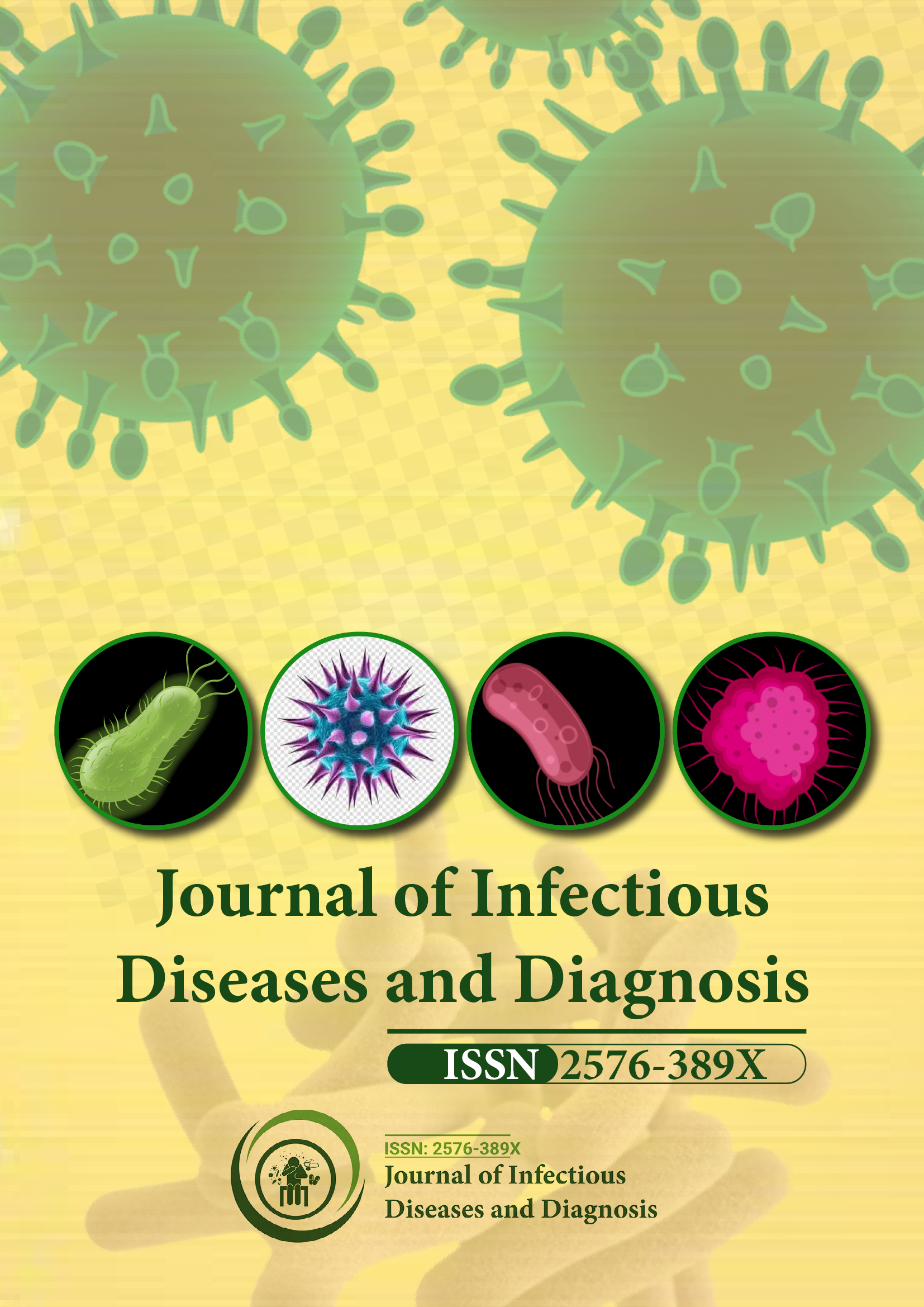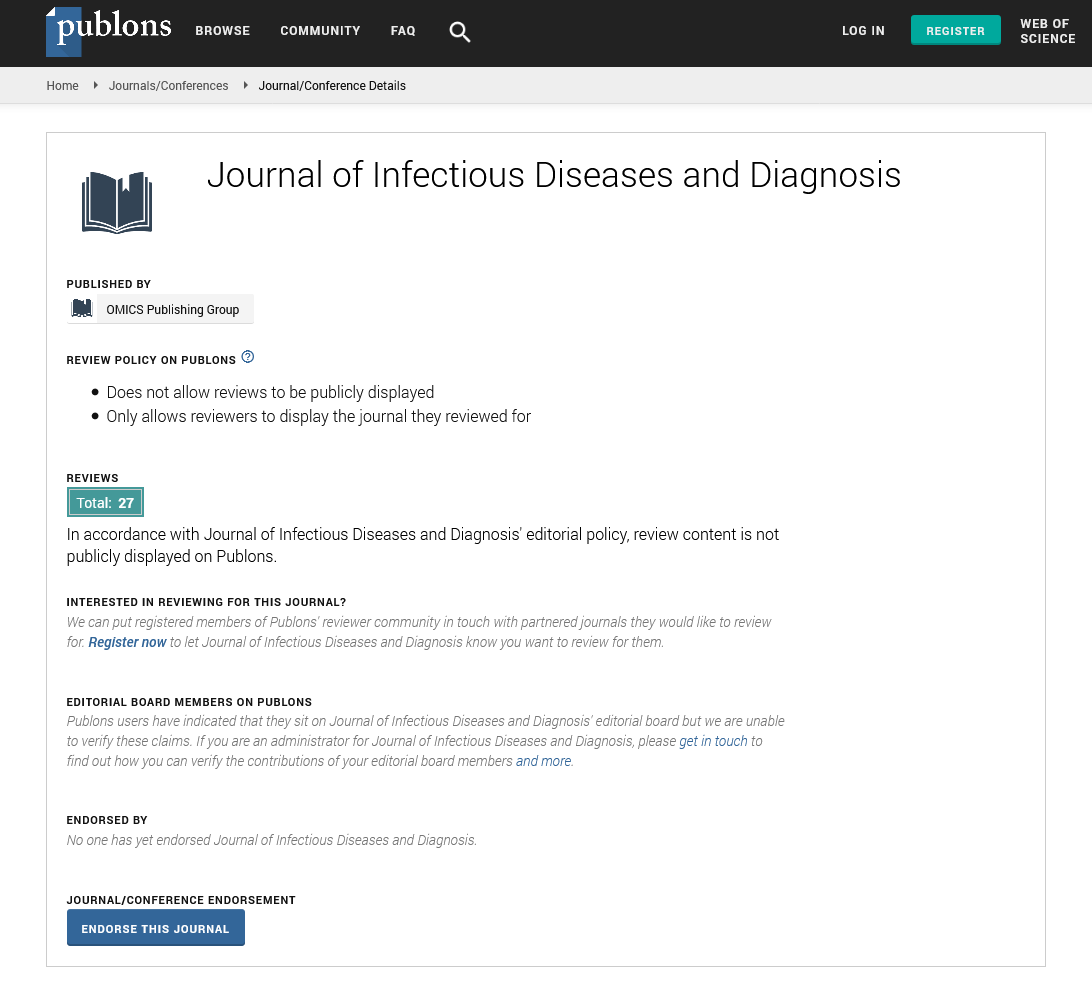Indexed In
- RefSeek
- Hamdard University
- EBSCO A-Z
- Publons
- Euro Pub
- Google Scholar
Useful Links
Share This Page
Journal Flyer

Open Access Journals
- Agri and Aquaculture
- Biochemistry
- Bioinformatics & Systems Biology
- Business & Management
- Chemistry
- Clinical Sciences
- Engineering
- Food & Nutrition
- General Science
- Genetics & Molecular Biology
- Immunology & Microbiology
- Medical Sciences
- Neuroscience & Psychology
- Nursing & Health Care
- Pharmaceutical Sciences
Commentary - (2025) Volume 10, Issue 1
Influenza and Human Health: Strategies for Prevention and Treatment
Tamami Oishi*Received: 01-Jan-2025, Manuscript No. JIDD-25-28522; Editor assigned: 03-Jan-2025, Pre QC No. JIDD-25-28522 (PQ); Reviewed: 17-Jan-2025, QC No. JIDD-25-28522; Revised: 24-Jan-2025, Manuscript No. JIDD-25-28522 (R); Published: 31-Jan-2025, DOI: 10.35248/2576-389X.25.10.310
Description
Influenza, commonly known as the flu, is an infectious disease that affects the respiratory system. It is caused by influenza A, B, C and D viruses, with A and B being the primary culprits in human epidemics. The disease can range from mild to severe and in some cases, it can lead to complications such as pneumonia or exacerbate pre-existing conditions. Despite medical advancements, influenza remains a recurring concern due to its capacity to mutate and spread rapidly.
Etiology and transmission
The influenza virus belongs to the Orthomyxoviridae family and is primarily classified into subtypes based on Hemagglutinin (HA) and Neuraminidase (NA) surface proteins. The virus spreads mainly through respiratory droplets released when an infected person coughs, sneezes, or talks. Additionally, contact with contaminated surfaces can contribute to its transmission. The virus thrives in crowded places and during seasonal changes, particularly in colder months when people spend more time indoors.
Symptoms and diagnosis
Influenza symptoms often resemble those of other respiratory infections, making diagnosis challenging without laboratory confirmation. Common symptoms include fever, chills, cough, sore throat, runny nose, muscle aches and fatigue. Severe cases may result in complications such as bronchitis, sinus infections, or pneumonia, which can be life-threatening, especially in older adults, young children, pregnant women and individuals with underlying health conditions.
Diagnosis is typically based on clinical presentation, but laboratory tests such as Rapid Influenza Diagnostic Tests (RIDTs) and Polymerase Chain Reaction (PCR) assays can provide confirmation. PCR testing is more accurate and widely used in hospitals and research settings.
Prevention strategies
Preventing influenza requires a combination of vaccination, personal hygiene and public health interventions. Annual flu vaccines are designed to provide immunity against circulating strains. Since the virus mutates frequently, vaccines are updated each year to improve effectiveness. Hand hygiene, respiratory etiquette and wearing masks can reduce transmission, especially in high-risk environments. Public health initiatives, such as surveillance programs and awareness campaigns, play a key role in reducing the spread of the disease. Additionally, antiviral prophylaxis may be recommended for individuals at higher risk of severe complications.
Treatment options
Treatment for influenza aims to reduce symptoms and shorten the duration of illness. Antiviral medications, such as oseltamivir and zanamivir, can be effective if administered early in the course of the illness. These medications work by inhibiting viral replication, reducing symptom severity and the risk of complications.
Supportive care, including rest, adequate fluid intake and overthe- counter medications for symptom relief, is commonly advised. Hospitalization may be necessary for severe cases, particularly in individuals with compromised immune systems.
Challenges in influenza control
Influenza presents ongoing challenges due to its genetic variability and ability to cause seasonal epidemics and occasional pandemics. The emergence of new strains, such as H1N1 in 2009, highlights the unpredictable nature of the virus.
Vaccine production requires time and resources and mismatches between predicted and circulating strains can reduce vaccine effectiveness. Additionally, misinformation and vaccine hesitancy hinder public health efforts. Strengthening surveillance systems and investing in vaccine research are necessary to improve preparedness for future outbreaks.
Conclusion
Influenza remains a significant public health issue due to its high transmission rate and potential to cause severe illness. Ongoing research, vaccination programs and preventive measures are essential to reduce its impact. Public awareness and early intervention play a major role in limiting the burden of this disease. As the virus continues to evolve, scientific advancements in diagnostics, treatment and vaccine development will be vital in controlling its spread and mitigating its consequences.
Citation: Oishi T (2025). Influenza and Human Health: Strategies for Prevention and Treatment. J Infect Dis Diagn. 10:310.
Copyright: © 2025 Oishi T. This is an open-access article distributed under the terms of the Creative Commons Attribution License, which permits unrestricted use, distribution and reproduction in any medium, provided the original author and source are credited.

